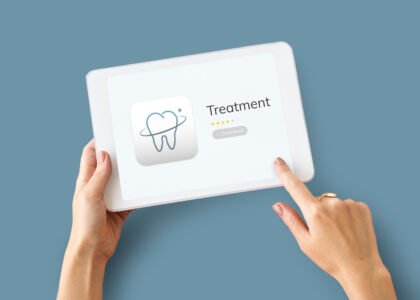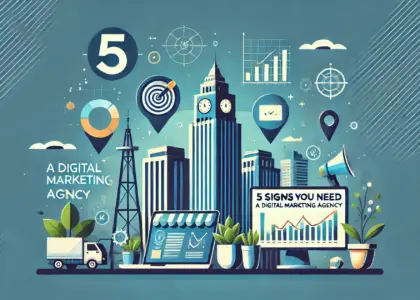In the ever-evolving digital landscape, on-page optimization is a fundamental pillar of successful SEO (Search Engine Optimization). It’s the process of optimizing individual web pages to rank higher on search engine results pages (SERPs). Proper on-page optimization can significantly improve your website’s visibility, attract organic traffic, and boost your online presence.
In this comprehensive guide, we will delve into what on-page optimization is, why it is necessary, and how to execute it effectively with real-life examples.
What is On-Page Optimization?
On-page optimization encompasses a range of practices that are implemented directly on your website’s pages to improve their search engine visibility. It is all about making your content and HTML source code more search engine-friendly.
The main components of on-page optimization include:
1. High-Quality Content:
Content is king in the SEO world. Ensure your content is well-researched, informative, and valuable to your target audience. Quality content not only engages your visitors but also attracts more backlinks, a critical factor for SEO success.
Example: If you run a blog about gardening, your content should provide in-depth guides on topics like “How to Grow Organic Tomatoes” with detailed steps, images, and expert insights.
2. Keyword Optimization:
Identify and strategically incorporate relevant keywords in your content. Research popular and long-tail keywords that your target audience is likely to search for. Place these keywords in the title, headings, and naturally throughout the content.
Example: If your website sells handmade jewelry, use keywords like “unique handcrafted jewelry” or “artisan jewelry” in your product descriptions and blog posts.
3. Meta Tags:
Optimize your meta title and meta description to accurately represent your content and include your target keyword. These tags appear in search results and can greatly impact click-through rates.
Example: For an article about the benefits of yoga, a suitable meta title could be “Discover the Health Benefits of Yoga,” with a meta description like “Explore the physical and mental advantages of a regular yoga practice.”
4. Heading Tags:
Structure your content using H1, H2, and H3 tags to create a clear hierarchy. These tags help search engines understand the content’s structure and emphasize key points.
Example: In an article about traveling to Paris, you might use an H2 tag for “Top Attractions in Paris” and H3 tags for specific attractions like “Eiffel Tower” and “Louvre Museum.”
5. Image Optimization:
Optimize images by adding descriptive alt text and compressing them to improve page load times. This is crucial for both user experience and SEO.
Example: If you’re running an online fashion store, your alt text for a product image could be “Elegant Red Evening Dress – Front View.”
6. Internal and External Links:
Include relevant internal links to other pages on your website and authoritative external links to reputable sources. This boosts the user experience and adds credibility to your content.
Example: In an article about technology trends, you could link to related articles on your website, as well as authoritative sources like Wired or TechCrunch.
Why On-Page Optimization is Necessary
On-page optimization is essential for several reasons:
Improved Search Engine Rankings: Effective on-page optimization increases your chances of ranking higher in search results, ultimately driving more organic traffic to your website.
Enhanced User Experience: Structured, well-optimized content improves the user experience, making it easier for visitors to find the information they -need.
Reduced Bounce Rate: When visitors find what they’re looking for, they’re more likely to stay on your site, reducing bounce rates.
Higher Conversion Rates: Quality content and optimized design can lead to higher conversion rates, whether you’re looking to sell products, collect leads, or convey information.
Credibility and Authority: When your content is well-organized and informative, it builds your authority in your niche and enhances your credibility.
How to Do On-Page Optimization
Now, let’s break down the process of on-page optimization step by step:
Step 1: Keyword Research
- Start with thorough keyword research using tools like Google Keyword Planner, SEMrush, or Ahrefs.
- Identify relevant keywords with high search volume and low competition.
Step 2: Quality Content Creation
- Develop high-quality content that addresses the needs and interests of your target audience.
- Organize your content with clear headings and subheadings to make it more reader-friendly.
Step 3: Meta Tags Optimization
- Craft a compelling meta title and description that includes your target keyword.
- Ensure it accurately represents your content and entices clicks.
Step 4: Heading Tags and Structure
- Use H1 tags for your main title and H2/H3 tags for subheadings.
- Organize your content logically, allowing both search engines and readers to navigate with ease.
Step 5: Image Optimization
- Add descriptive alt text to all images.
- Compress images to reduce load times.
Step 6: Internal and External Links
- Include relevant internal links to other pages on your site.
- Cite authoritative sources through external links to support your claims.
Step 7: Mobile Optimization
- Ensure your website is mobile-friendly to accommodate a growing number of mobile users.
Step 8: Page Speed Optimization
- Improve page load times by compressing images, minimizing HTTP requests, and leveraging browser caching.
Step 9: Regular Content Updates
- Keep your content fresh and up-to-date to maintain its relevance and value.
Step 10: User Testing
- Gather feedback from real users to improve the user experience.
By following these steps and continually monitoring your website’s performance, you’ll be well on your way to mastering on-page optimization and improving your SEO.
In conclusion, on-page optimization is the cornerstone of successful SEO. By creating high-quality content, optimizing your meta tags, structure, images, and links, you can improve your search engine rankings, enhance user experience, and ultimately drive more traffic to your website.
If you need assistance with on-page optimization, feel free to book a call with our experts who can help develop a website tailored to your business’s unique needs. Visit SocialBusk.com for more information.
Now, it’s your turn to put these on-page optimization techniques into practice and watch your website’s SEO rankings soar!







This list is not a quiz to put your partner through and prove they are great or terrible.えろ 人形consider each green flag as a continuum from very strong to weak.